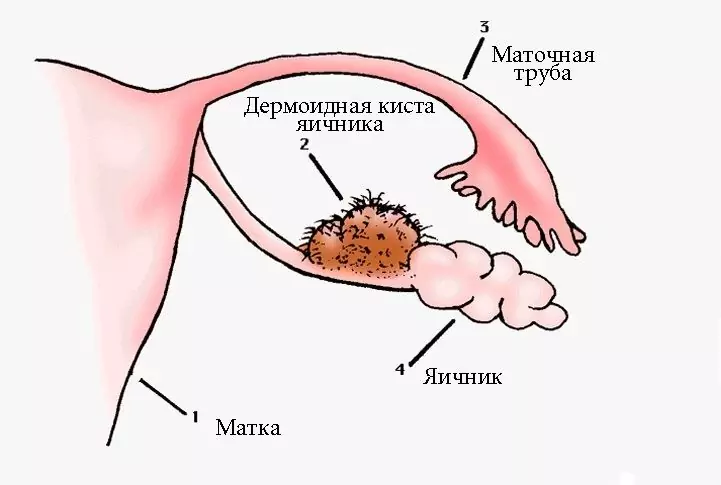- Author Rachel Wainwright [email protected].
- Public 2023-12-15 07:39.
- Last modified 2025-11-02 20:14.
Hemiparesis
The content of the article:
- Causes and risk factors
- Forms of hemiparesis
- Symptoms
- Diagnostics
- Treatment
- Possible complications and consequences
- Forecast
- Prevention
Hemiparesis is a neurological disorder in which there is a restriction of muscle movement in the right or left half of the body when the opposite hemisphere of the brain is affected.
The condition is associated with damage to the bodies of cortical motor neurons and the pathways of the brain or (in more rare cases) the spinal cord. With the progression of the pathological process, a gradual decrease in sensory and motor functions is observed, which causes the development of muscle damage. Usually hemiparesis occurs on the side opposite to the injury, which is caused by the intersection of nerve fibers at the junction of the medulla oblongata in the spinal cord.

Types of paresis
Causes and risk factors
With a sudden onset of the disease, its causes are usually brain neoplasms, multiple sclerosis, ischemic or hemorrhagic stroke, encephalitis, diabetic encephalopathy, traumatic brain injury, migraine.
The causes of slowly developing hemiparesis can be: atrophy of the cerebral cortex, brain abscesses, radiation myelopathy, slowly progressing brain tumors.
Risk factors for the development of hemiparesis include stress - both constant or frequent, and strong single.
The cause of the development of a congenital form of hemiparesis is usually anomalies in the development of the brain, fetal hypoxia, intrauterine or birth trauma.
Forms of hemiparesis
Depending on the etiology, hemiparesis is congenital and acquired.
Depending on the location of the primary brain injury:
- central - caused by damage to the pyramidal pathway in the area from the cortex to the anterior horns of the spinal cord;
- peripheral - caused by damage to the nuclei of the cranial nerves or cells of the anterior horns of the spinal cord with their axons (cranial nerves or anterior roots of the spinal cord).
By localization:
- right-sided hemiparesis - occurs more often, is characteristic of adults, is often accompanied by speech disorders;
- left-sided hemiparesis - more common in children (is one of the manifestations of cerebral palsy), often accompanied by mental disorders.
In a separate form affecting the limbs, spastic hemiparesis is distinguished.

Left-sided hemiparesis is one of the symptoms of cerebral palsy.
By the nature of the course:
- acute, or rapidly developing;
- subacute, or slowly developing.
By severity:
- light;
- moderate;
- deep.
Symptoms
The clinical picture in hemiparesis depends on the localization of the pathological focus and the degree of damage, and is very diverse.
The general symptoms of hemiparesis are prolonged headaches of varying intensity, fatigue, loss of appetite, weight loss, muscle and joint pain. Hemiparesis of central origin (the most common) is characterized by fever, speech disorders, cognitive impairment, and seizures similar to epileptic ones.

Common symptoms of hemiparesis are headaches, fatigue, joint and muscle pain.
With left-sided hemiparesis, the muscles of the left side of the body are weakened, with the right-sided form of pathology, the muscles of the right half of the body are affected. Movement disorders caused by muscle spasm occur 2-3 weeks after the onset of the disease and can increase throughout the year.
With the congenital form of the disease, as a rule, left-sided hemiparesis develops, which manifests itself in the first months of a child's life. At the initial stages of the disease, there are weak active and passive movements of the limbs on the side of the pathology, asymmetric movements of the upper and lower limbs, forced position of the hands. There is a weak support function of the leg of the affected side of the body, a violation of fine motor skills of the hand, improper posture, and scoliosis can form. In severe cases of hemiparesis, children may experience intellectual disabilities and mental abnormalities. Left-sided hemiparesis is often accompanied by impaired imagination, color perception, three-dimensional perception, disorientation in space.
Right-sided hemiparesis is often accompanied by impaired logical thinking, analytical skills, acalculia (impaired counting and counting operations).
Spasticity of the muscles on one side of the body is noted with the central nature of the pathology. In such patients, unilateral muscle hypertonia is observed. Patients complain of muscle stiffness, impaired motor activity. In the peripheral form of the disease, there is a decrease in muscle tone (flaccid paresis), degenerative muscle atrophy, pronounced trophic and vasomotor disorders.
In the case of focal lesions of the brain, the patient has impaired motor function, as well as decreased sensitivity of the right or left half of the body. In this case, the lower limb on the side of the lesion does not bend when walking, making a semicircular movement across the side. These patients are usually more likely to recover motor function. In case of damage to the nervous tissue or extensive hemorrhage, neurological disorders occur: impaired speech and intelligence, epileptic seizures, impaired perception, emotional response, personality disorders.
Diagnostics
For the diagnosis of hemiparesis, complaints and anamnesis are collected, an objective examination of the patient, as well as instrumental studies, the volume and nature of which depends on the form of pathology.
Muscle strength is measured on a five-point scale adopted by the British Medical Research Council:
- 0 - no movement;
- 1 - weak muscle contractions;
- 2 - movements are carried out only in the horizontal plane;
- 3 - the limb rises in the absence of resistance;
- 4 - the limb rises with little resistance;
- 5 - the movements are preserved in full volume and strength.
To identify the cause of hemiparesis, computed or magnetic resonance imaging, electromyography, Doppler ultrasonography of the blood vessels of the brain are performed.

Instrumental examination - CT or MRI helps to find out the cause of hemiparesis
In children, the diagnosis of hemiparesis is established at one to one and a half years, when children begin to walk and movement disorders become more specific.
Treatment
Treatment of hemiparesis is most effective in the first year after the onset of neurological disorders.
With a mild form of hemiparesis, therapy consists in carrying out a course of physiotherapy exercises (may include gymnastics on fitball, swimming, etc.). Also shown are general and segmental massage, hydromassage, hippotherapy (treatment with horses), as well as hardening procedures.
Drug therapy is prescribed as needed. Muscle relaxants, anticonvulsants, drugs that improve the trophism of the nervous tissue and the blood supply to the brain, including vitamin complexes (vitamin E, B vitamins) are used.
In the treatment of hemiparesis, methods of physiotherapy are effective: electrophoresis, ultrasound therapy, diadynamic therapy, reflexology, mud therapy. In order to prevent the formation of contractures of the joints and muscles, they resort to physiological laying of the limbs with the help of splints.

With a mild form of hemiparesis, therapeutic gymnastics courses are effective
For social adaptation and normalization of the emotional state, a course of psychotherapy may be required. Speech disorders require training with a speech therapist.
In severe forms of pathology, surgical intervention on the affected muscles may be required.
Possible complications and consequences
Hemiparesis can be complicated by a complete loss of muscle strength on the affected side of the trunk, that is, by the development of paralysis (hemiplegia).
Forecast
The prognosis depends on many factors, including the cause and severity of the pathology. With timely diagnosis and correctly selected treatment, the prognosis for acquired hemiparesis is usually favorable, in most cases, complete restoration of lost functions is possible. The prognosis for congenital hemiparesis is cautious. Mild forms with persistent therapy are amenable to correction, heavy ones, despite the efforts made, can only be partially corrected.
Prevention
In order to prevent the development of hemiparesis, it is recommended:
- timely treatment of somatic diseases;
- monitoring the condition of a woman during pregnancy and the developing fetus;
- prevention of vascular disorders;
- avoidance of stress and mental strain;
- rejection of bad habits;
- balanced balanced nutrition;
- sufficient physical activity.

Anna Aksenova Medical journalist About the author
Education: 2004-2007 "First Kiev Medical College" specialty "Laboratory Diagnostics".
The information is generalized and provided for informational purposes only. At the first sign of illness, see your doctor. Self-medication is hazardous to health!






